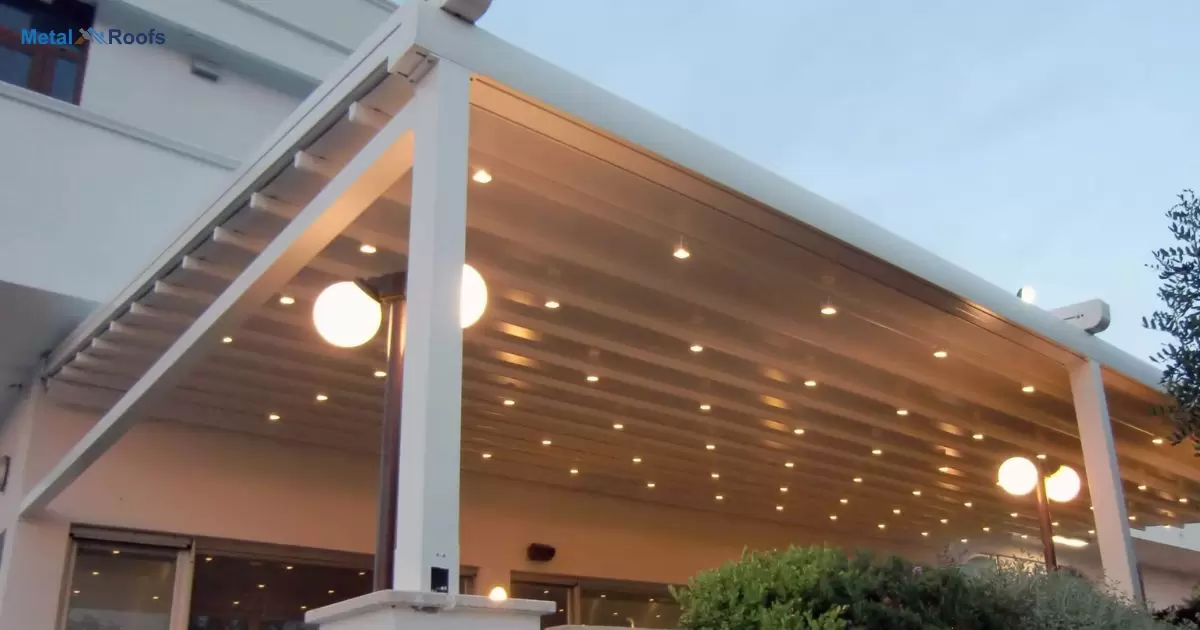A pergola roof covers an outdoor area. It has open rafters, not solid surfaces. It provides partial shade and airflow. Pergola roofs allow light and rain. They have wood, vinyl, or metal frames. Beautiful vines or plants grow on them.
Outdoor living spaces need protection. A waterproof pergola roof is ideal. It blocks rain but allows some light. The roof creates a cozy, shaded area. It can have solid or slatted panels. Materials like aluminum are durable.
Clear roof panels for a pergola are a great addition. They keep you dry during light rain while maintaining an open feeling. These panels are made from durable materials like aluminum, vinyl, or wood, with sealed joints and coatings for waterproofing.
Key Takeaways
- Choose waterproof materials like polycarbonate panels or fabric canopies for a durable pergola roof.
- Proper installation with a slight slope ensures effective water drainage.
- Regular maintenance and inspection help prolong the lifespan of your waterproof pergola roof.
- Consult with professionals or experienced contractors for successful installation and long-term functionality.
Understanding the Basics of Waterproof Pergola Roofs
To make a waterproof pergola roof, use durable materials like polycarbonate panels or corrugated metal sheets. These materials keep rain out while letting natural light in. Install them with a slight slope for water drainage.
You can also opt for a fabric canopy made of waterproof materials like polyester or vinyl. Ensure it’s securely attached and properly tensioned. Regular maintenance and inspection will help prolong the roof’s lifespan.
Types of Waterproof Pergola Roof Materials
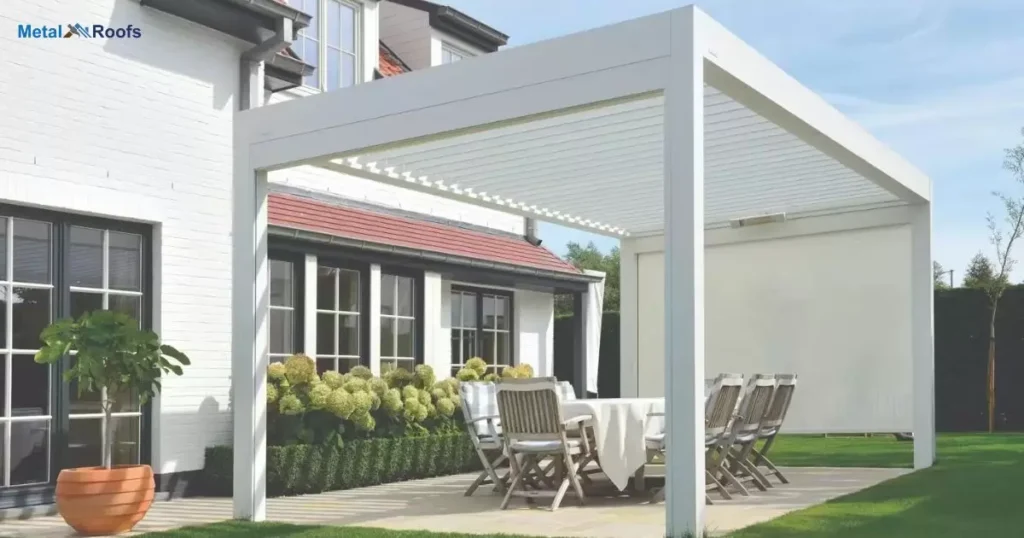
Some common types of waterproof materials for pergola roofs include:
Polycarbonate Panels: Lightweight and durable, they let in natural light while keeping rain out. Install with a slight slope for drainage.
Corrugated Metal Sheets: Weather-resistant and sturdy, these provide excellent rain protection when installed with proper sealing and overlap.
Fabric Canopy: Made from waterproof materials like polyester or vinyl, these canopies offer flexibility and are securely attached for reliable rain protection.
Wood Shingles or Tiles: Treated with sealants, they become water-resistant options, especially when installed with proper flashing and overlap.
Glass Panels: Elegant and modern, tempered or laminated glass panels offer both rain protection and natural light, needing proper sealing during installation.
Choosing the Right Waterproof Pergola Roof Material
Choosing the right waterproof pergola roof material is essential for durability. Consider options like polycarbonate panels or corrugated metal sheets for weather resistance. Ensure proper sealing to prevent leaks and maintain drainage.
Fabric canopies or wood shingles can also work well, but they require regular maintenance. Retractable awnings offer versatility but may need adjustments based on weather conditions. Glass panels provide elegance but must be installed securely to avoid leaks.
DIY Waterproof Pergola Roof Ideas
Here are some DIY waterproof pergola roof ideas you can consider:
Polycarbonate Panels: Install polycarbonate panels on your pergola roof for a lightweight and durable waterproof solution. Ensure proper sealing and slope for water drainage.
Fabric Canopy: Create a waterproof fabric canopy for your pergola using materials like polyester or vinyl-coated fabric. Securely attach the canopy and tension it properly to prevent sagging.
Corrugated Metal Sheets: Use corrugated metal sheets made from materials like steel or aluminum for a weather-resistant pergola roof. Seal and overlap the sheets to prevent water leaks.
Wood Shingles with Sealant: Apply a waterproof sealant to wood shingles and install them on your pergola roof. Ensure proper overlap and sealing between shingles to keep water out.
Retractable Awnings: Install a retractable awning with waterproof fabric for a versatile pergola roof. Adjust the awning based on weather conditions to provide adequate protection from rain.
DIY Green Roof: Create a green roof on your pergola using waterproofing membranes, soil, and plants. This eco-friendly option adds insulation and aesthetic appeal while keeping your pergola waterproof.
Remember to consider factors like budget, climate, and maintenance requirements when choosing a DIY waterproof pergola roof idea.
Waterproof Pergola Roof Installation
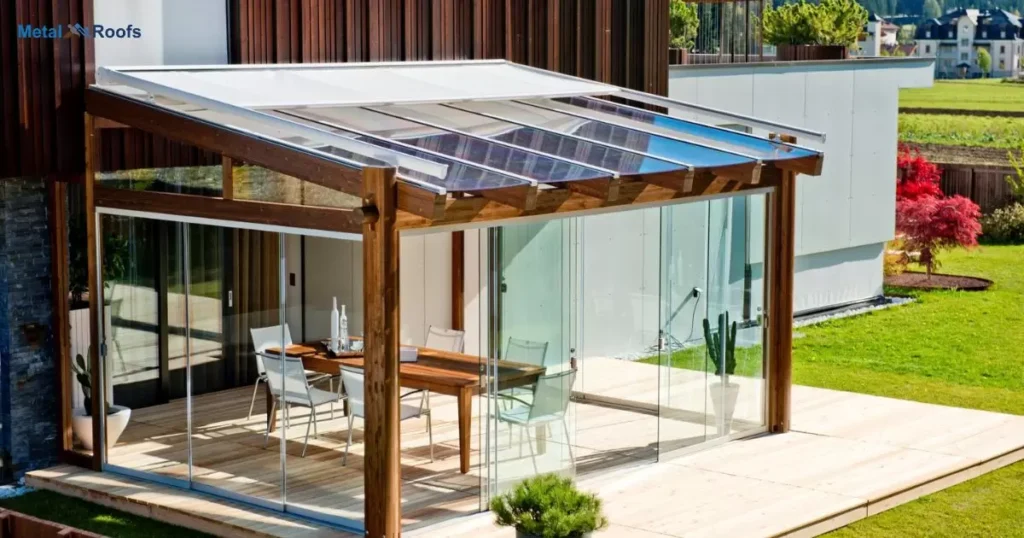
Installing a waterproof pergola roof involves several steps to ensure durability and effectiveness. Here’s a brief guide:
Selecting Materials: Choose a waterproof roofing material such as polycarbonate panels, corrugated metal sheets, or waterproof fabric. Consider factors like durability, aesthetics, and budget.
Preparation: Prepare the pergola structure by ensuring it is sturdy and properly anchored to the ground or attached to a building. Clean the surface and make any necessary repairs.
Installation: Install the chosen roofing material according to manufacturer guidelines. For polycarbonate panels or metal sheets, ensure they are securely attached with proper overlap and sealing. If using fabric, attach it tightly and ensure proper tension to prevent sagging.
Slope and Drainage: Create a slight slope on the roof to facilitate water drainage. This prevents water from pooling and causing damage. Install gutters and downspouts if needed to direct water away from the pergola.
Sealing and Finishing: Seal any seams, joints, or penetrations with waterproof sealant or tape to prevent leaks. Add finishing touches such as trim or edging for a polished look and added protection.
Maintenance: Regularly inspect and maintain the waterproof pergola roof. Clean debris, check for signs of wear or damage, and reapply sealant as needed to prolong the roof’s lifespan.
By following these steps carefully and using high-quality materials, you can create a functional and attractive waterproof pergola roof for your outdoor space. Consider consulting with a professional if you’re unsure about any aspect of the installation process.
Waterproof Pergola Roof Maintenance
| Maintenance Task | Description |
| Regular Cleaning | Prevents debris buildup and maintains drainage. |
| Inspection for Wear and Damage | Identifies and addresses any signs of damage. |
| Seals and Joints Inspection | Ensures tightness and integrity to prevent leaks. |
| Application of Waterproof Sealant | Adds an extra layer of protection against water. |
| Check Drainage System | Ensures water flows away efficiently to prevent damage. |
| Regular Upkeep | Maintains the roof’s effectiveness and prolongs lifespan. |
Maintaining a waterproof pergola roof is vital for its longevity. Clean debris regularly to prevent clogging and water buildup. Check for any signs of wear or damage, such as cracks or leaks.
Inspect the roof’s seals and joints for tightness and integrity. Apply a waterproof sealant or coating as needed. Keep an eye on the drainage system to ensure water flows away from the structure efficiently. Regular upkeep will help your pergola roof withstand the elements and stay in excellent condition for years to come.
Aluminum Pergolas
Aluminum pergolas are durable and lightweight, making them ideal for outdoor settings. They are resistant to rust and corrosion, ensuring longevity and low maintenance.
These pergolas come in various designs and colors, offering versatility and customization options to suit different preferences and styles.
Fiberglass Pergolas
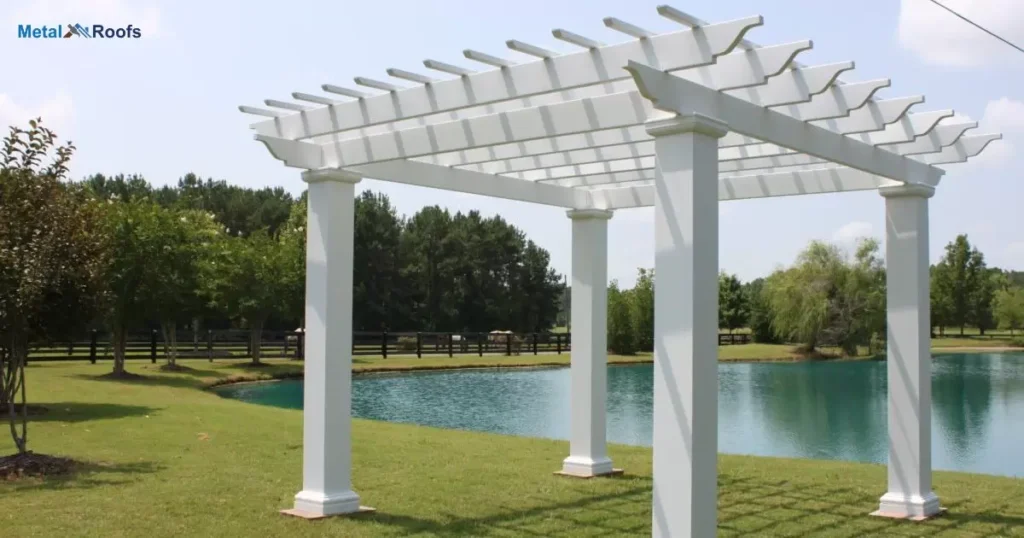
Fiberglass pergolas are durable and lightweight, making them ideal for outdoor use. They require minimal maintenance and can withstand various weather conditions.
These pergolas are available in different designs and colors, offering versatility and aesthetic appeal for your outdoor space.
Retractable Pergola Roofs
A retractable pergola roof offers versatility by adjusting to weather conditions. You can open it to enjoy sunlight or close it for shade and rain protection. The retractable design adds functionality and style to your outdoor space.
These roofs come in various materials like fabric or waterproof panels. They’re easy to operate and can be motorized for convenience. Consider factors like durability, maintenance, and aesthetics when choosing a retractable pergola roof for your home.
Louvered Pergola Roofs
Louvered pergola roofs offer versatility by allowing you to adjust the amount of sunlight and ventilation. You can open the louvers to let in sunlight or close them for shade and protection from rain. This feature enhances your outdoor living experience throughout the year.
These roofs are typically made from durable materials like aluminum or wood, ensuring longevity and low maintenance. They add style and functionality to your outdoor space, creating a comfortable and enjoyable environment for relaxation and entertainment.
Waterproof Pergola Covers Home Depot
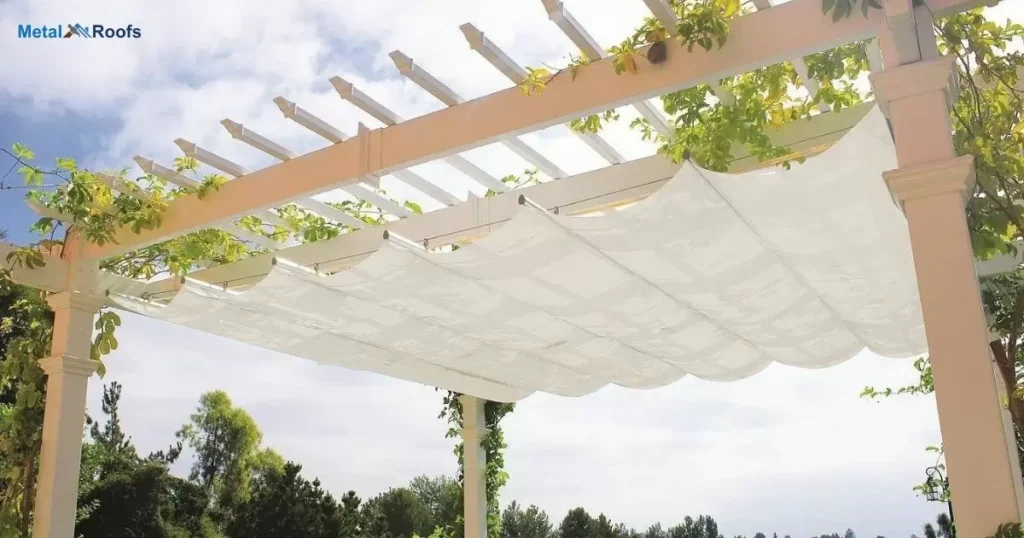
Home Depot offers a variety of waterproof pergola covers suitable for outdoor use. You can find options like polycarbonate panels or fabric canopies designed to keep rain out while allowing light through.
These covers are easy to install and provide protection for your outdoor space, enhancing its functionality and aesthetics.
Frequently Asked Questions
How do you waterproof a pergola roof?
Use materials like polycarbonate panels or waterproof fabric canopies designed for outdoor use. Ensure proper installation with a slight slope for water drainage.
How do you cover a pergola in the rain?
You can cover a pergola in the rain with waterproof materials like polycarbonate panels or fabric canopies to keep the space dry and functional.
Can a pergola keep out rain?
Yes, a properly designed and equipped pergola can effectively keep out rain, especially when using waterproof materials like polycarbonate panels or fabric canopies.
Conclusion
A waterproof pergola roof is a wise investment. It expands usable outdoor space at your home. Weather protection allows year-round relaxation or entertaining. Minimal upkeep ensures lasting enjoyment and value.
Research options to find the best fit. Consider your climate and desired pergola uses. Properly installed, quality materials ensure long-lasting performance. Enjoy your new waterproof pergola escape for years.
